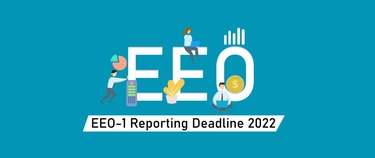
Before diving into the EEO-1 report, let’s talk about the EEOC first that mandates the EEO-1 Component 1 report.
The EEO-1 Component 1 data is part of the EEOC’s mission to achieve equality and fairness in the workplace so that there can be a level playing field for everyone (regardless of their gender, sex, race, age, nationality and disability) in the workplace.
The Equal Employment Opportunity Commission or the EEOC is the agency that enforces federal law. The agency prohibits discrimination against anyone who is applying for the job and the employees. So, employers who must follow the EEOC guidelines can’t discriminate against any employee based on race, color, religion, sex (including gender identity, pregnancy), nation origin, age, and disability.
What is the EEO-1 Component 1 Data Report?
The EEO-1 report, also known as the Employment Information Report is a report which is filed by qualified employers with the EEOC to provide certain data to the agency. This is a survey that reveals how diverse a workplace is in terms of:
- Job categories
- Gender
- Race
- Ethnicity
What are the filing requirements for the EEO-1 Form?
Every private sector or organization with 100 or more employees and federal contractors with 50 or more employees must file the EEO-1 Component 1 data report.
A private-sector employer also needs to file the EEO-1 component 1 data report if they have fewer than 100 employees; however, it’s either owned, controlled or affiliated with the company that has 100 or more than 100 employees company-wide.
Who is exempt from the report?
The EEOC has not mandated this report for every employer and organization. There are exemptions for some employers, entities, and organizations. They are listed below:
- Private employers with 1-99 employees or federal employers with 1-49 employees are not required to submit EEO1 Component 1 reports.
- If the entity was located in the U.S. territories such as the U.S. Virgin Islands, American Samoa, and Guam, in that case, the entity or the organization isn’t required to file the report.
- An entity such as state and local governments. American, Alaskan native tribes, membership clubs and labor organizations.
- Organizations and entities that must file the report, though the process of filing the report can create an undue hardship for them, in that case, they can plead for the exemption.
What is the reporting deadline for EEO-1 component 1 data collection?
The reporting portal has opened. And the deadline for submitting the component 1 report is May 17, 2022. Many employers have expressed concern over the shortened period. Though, the EEOC has not clarified the reason behind it. The agency may extend the deadline as it has done in the past two years. However, as of now, there has been no further announcement made by the EEOC.
How to file the EEO-1 Report?
First of all, make sure that your organization is qualified for the EEO-1 reporting. If so, visit the EEOC’s online filing system website for the EEO-1 component 1 report.
Here is the list of required documents you need to have for filing the report:
- Company ID and Passcode
- Company EIN
- Company DUNS Number
- NAICS Code
- Sex and race/ethnicity of all employees
- Job categories of all employee
- Address and EINS for all establishment location
- Count all employees (Part-time and full time) during the “workforce snapshot pay period” stipulated by the employer.
Penalties for the Non-compliance
In general, if an organization or entity that is required to file the EEO-1 report but fails to do so doesn’t qualify for the civil penalty, the entity must realize that the lawsuit can be lavish. The organization must know that the EEOC has the right to file a lawsuit against the employer through the U.S. District Court to submit the report.
However, suppose an employer wants to change the date of submission of his\her report or change the period of data to be filed. In that case, he\she can write a proposal seeking approval from the commission with regards to the same.
If the organization or the entity willfully conclude to falsify the report, then, in those cases, the agency imposes stringent fines or imprisonment.
Enthusiasts willing to know more about the EEO-1 elaborately can Enroll themselves in our SHRM and HRCI-approved courses in order to raise their professional credits.
Click on the Title to learn more – 2022 EEO-1 Reporting Requirements




